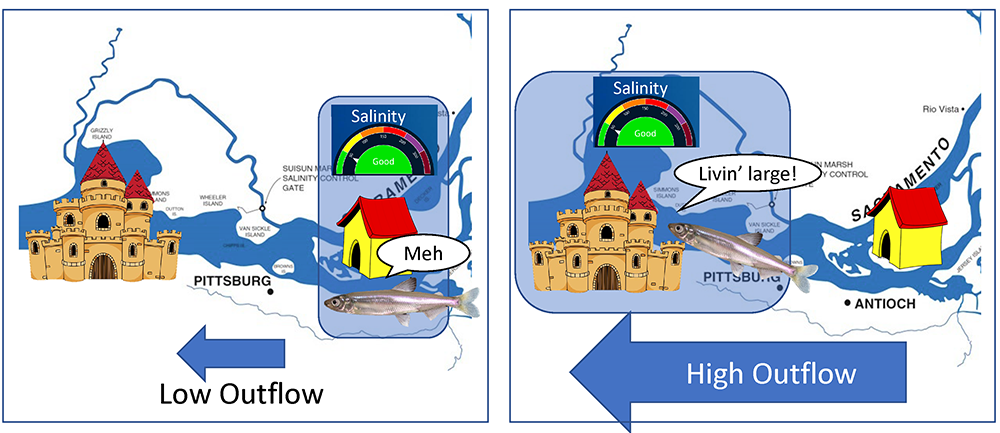From the Interagency Ecological Program’s Science Stories: Adventures in Bay-Delta Data:
Act I
It was a dark and stormy night. Actually, it wasn’t stormy, which was the problem. The curtain rises on the intrepid scientists of the Interagency Ecological Program (IEP) in 2016 as California’s drought continues. They are wrestling with a critical question: Is high fall outflow the key to improving habitat conditions for Delta Smelt and benefiting the population? Scientists and resource managers in the San Francisco Estuary are desperately trying to save the endangered Delta Smelt, but the best research to date had resulted in “It’s complicated” (Sommer et al. 2007). However, many studies pointed to high Delta outflow (freshwater flowing out of the estuary) was an important part of the story (IEP-MAST et al. 2015; Thomson et al. 2010). Delta Smelt had positive population growth rates only twice since 2002, and both years had high flows.
Enter from stage left, our heroes: The Flow Alteration Management Analysis and Synthesis Team (FLOAT-MAST).
Click here to continue reading from the IEP.



